Thank you all who helped Tiki Itatae from paper to water.
Special thanks goes to Ott, Olev, Rivo and Rauno and to my family – thank you for being patient and supportive!
Pro Marine Trade – thank you for providing main and jib sheet blocks.

Thank you all who helped Tiki Itatae from paper to water.
Special thanks goes to Ott, Olev, Rivo and Rauno and to my family – thank you for being patient and supportive!
Pro Marine Trade – thank you for providing main and jib sheet blocks.
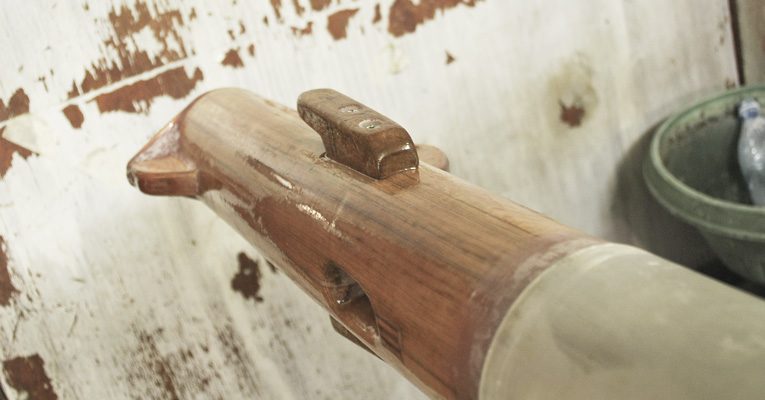
After couple of laborious days of planing-sanding-planing-sanding-swearing-sanding-planing-sweating-sanding-swearing-planing-sanding i finally managed to produce snugly fitting top and heel for the mast:
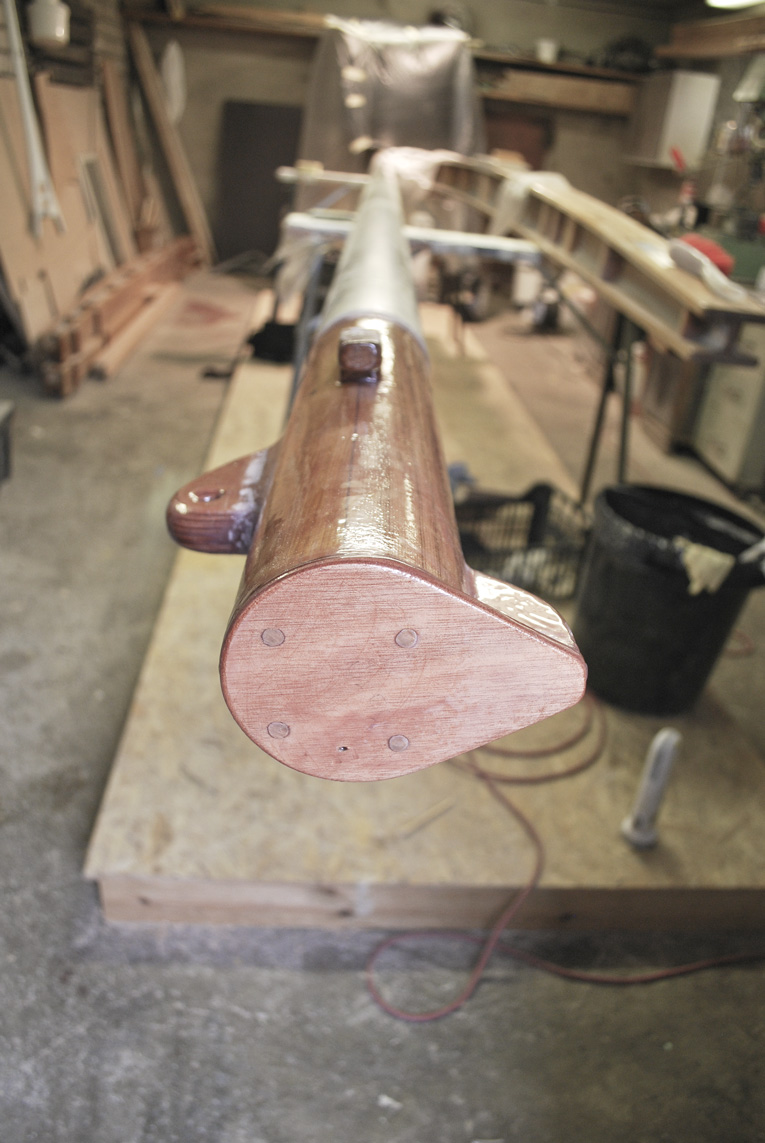
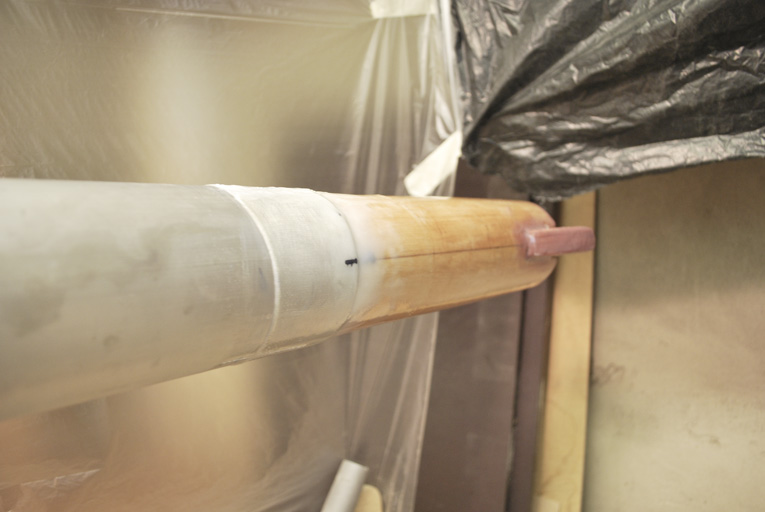
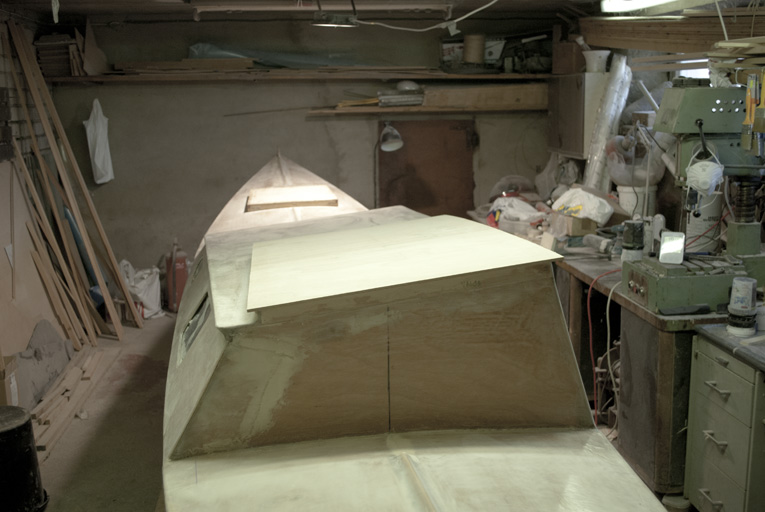
Port hull almost done, still lots to do…
… waiting in the list:
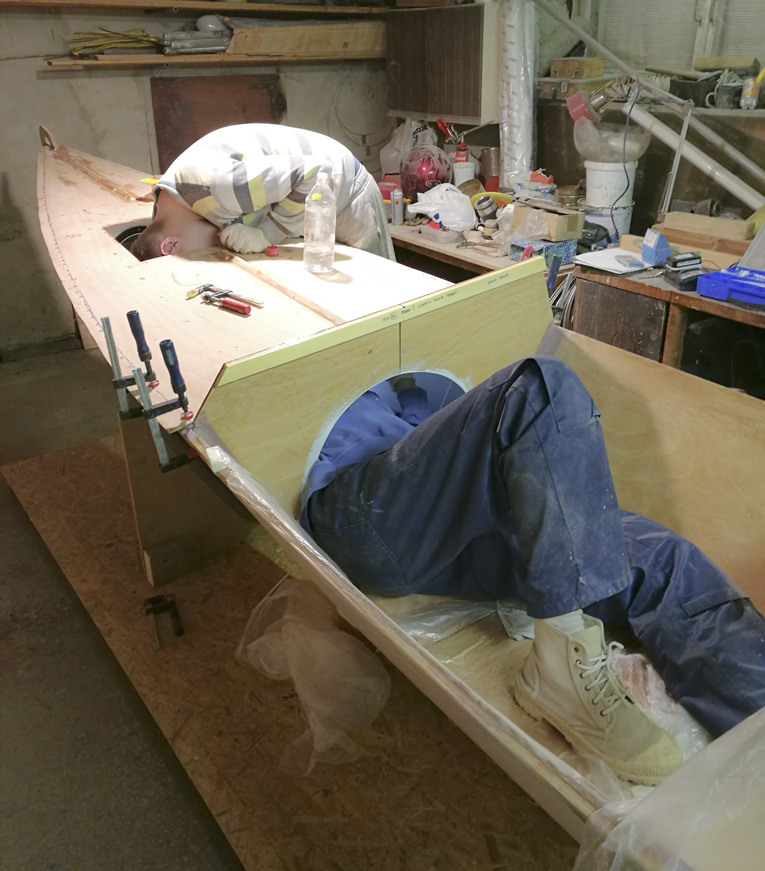
With extra pairs of helping hands it was rather pleasing act to glue on the forward deck.
Thanks a lot, mates!
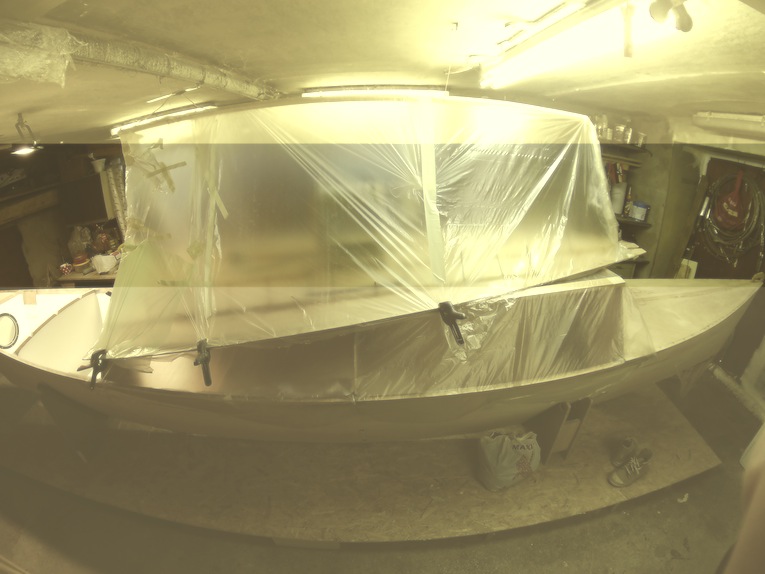
Those freshly glued front deck stringers got nice and cozy overnight stay under this i-love-to-hassle-with-masking-tape tent
A fellow amateur Tiki builder Brad shared his experience in Southwinds magazine. Check out his story in page 44.
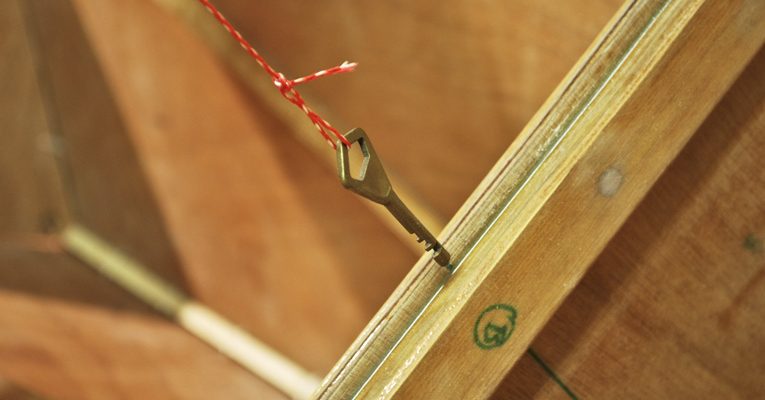
So… second hull got stitched up and yesterday I made some nice fillets for keel & bulkheads for 2 sections… I think its time to talk about little variations and changes I have made and plan to make into workflow, just to make whole process a little bit smoother and less time consuming.
Those modifications seem rather irrelevant, but again, when most of the (epoxy related) works are carried on by single person, then every little nuance start to play important role, especially those that help to reach results easier and faster.
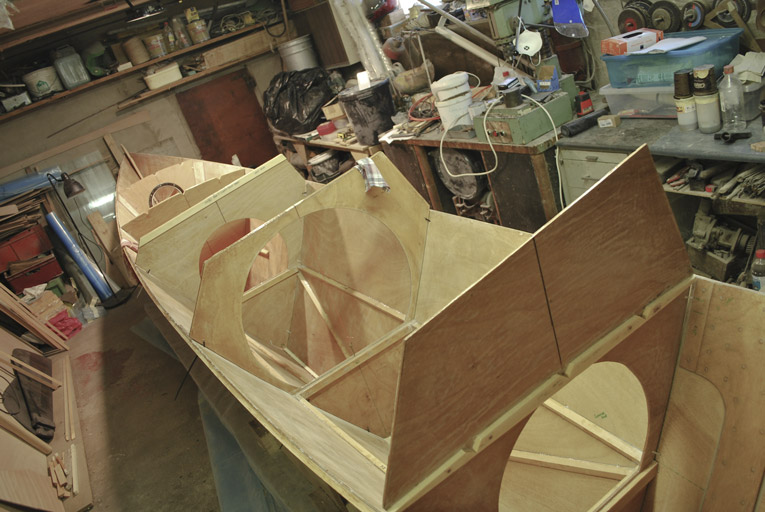
Port hull, all stitched up, with glued sheer stringers and additional bunk bearers.

A key for levelling the hull.
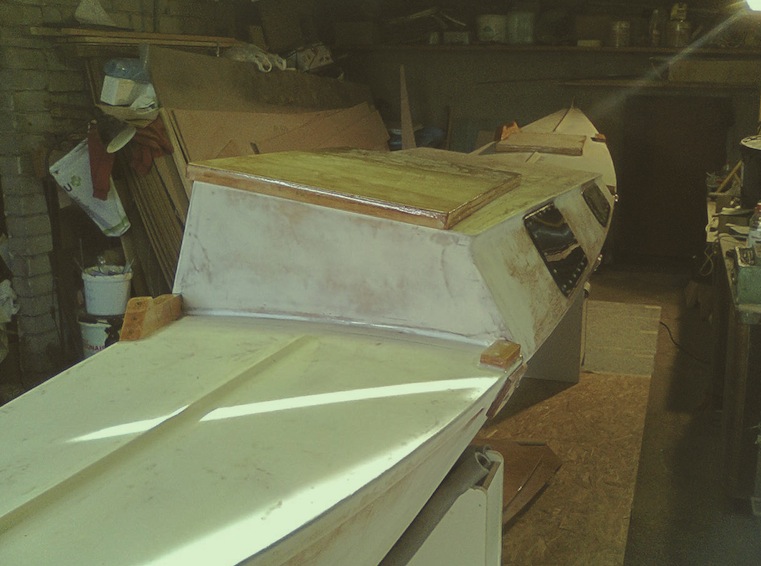
Starboard hull waiting for some sanding and then paint job and off you go… (… I need to figure out how to configure jib sheet block attachment and main hatch locking system, though…)
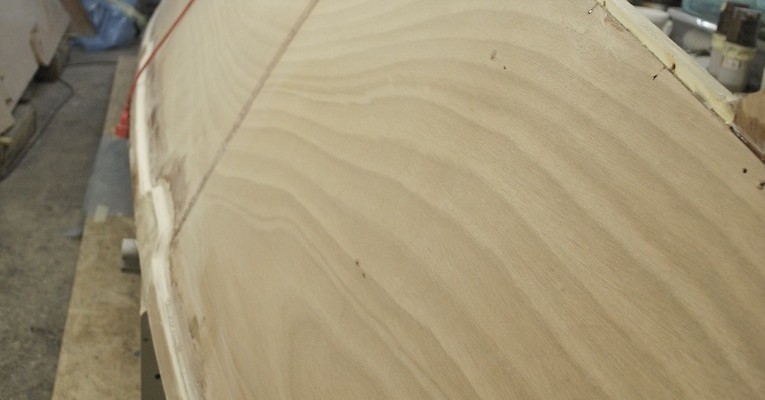
Dear Diary,
it has been long time since I last wrote to you… but, still, there have been some advancement in the Garage. What I managed to achieve is — despite of too cold spring (bad for epoxy cooking) and too hot early summer (hard to stay put in shady garage) — gluing coaming for main hatchway and constructing main hatch, glassing topsides of the hull (decks and cabin). Later process has been pretty emotional :p — getting glass over the upper deck stringers without air bubbles and sticking it onto underside of the sheerstringer was business that one may call PITA. Nevertheless, work itself is the best teacher and when I finally got into glassing the forward deck I managed to execute the process with minimal losses i.e. decently smooth finish, which requires minimal sanding later on.
So lets have a quick glance of the mess I have created (hull is turned so we could have a clear view of the sight).
1. exhibit A
– after fiberglass on deck and sides of the sheerstringer was wetted, next move was to try tap it into place underside of the sheerstringer using a brush. With not much of luck. Things got under control when I brushed undersides over with epoxy and WS Microlight filler.
Note that I have already covered up some of the traces (using good old elbow grease and 60 grit sandpaper).
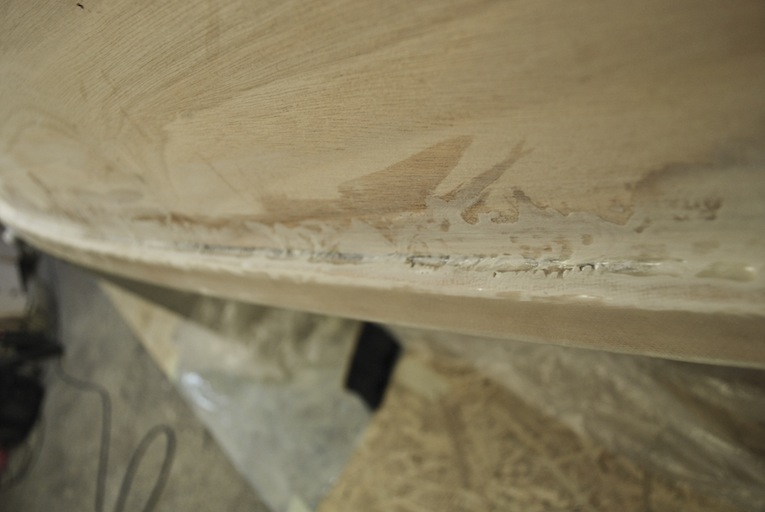
2. exhibit B
– so here you can see me trying to get glassfiber down from cabin sides stick to underside of the sheerstringer, but this time, I didn’t cut the glass flush with the corner – instead I let the epoxy set for a while, then after it got really sticky, I removed the excess and applied fillet (Microlight) right a way on top of it.
Again, this evidence have had some touch ups already.
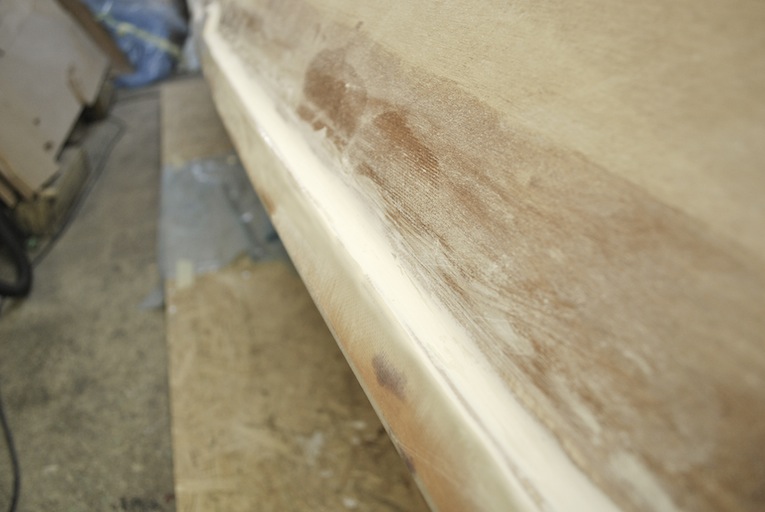
3. exhibit C
Well now I can be proud of myself and honor my humble figure with Distinguished Service Order as I demonstrated unprecedented capability to evolve and learn from past mistakes whereas this time (forward deck) I produced nice and neat fillets (Microlight) and let them set semi-hard before I moved to sheerstringers undersides with glassing. I removed the excess of the fiberglass just before applying saturation coat (mixed again with Microlight to avoid sagging).
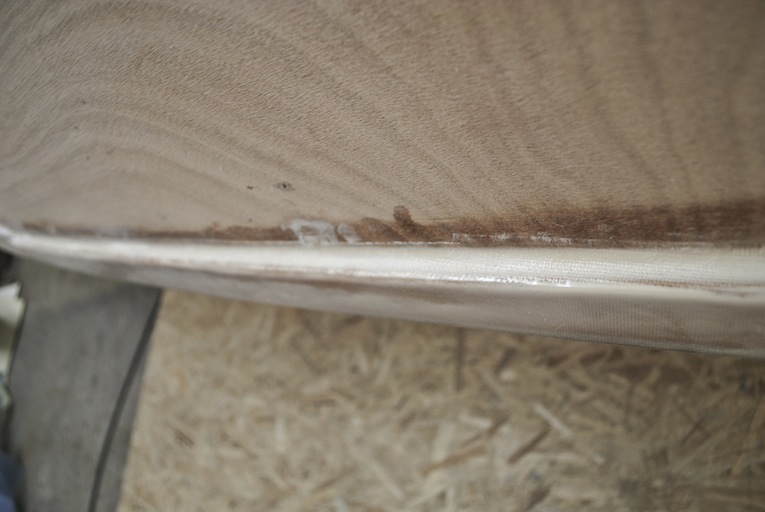
PS! Decks and cabin sides saturation coat were thickened with Microlight, which is rather easy to work with (whether applying or sanding it).
So now the itinerary offers me adventure down under – fillets around the keel, aft deck sheerstringer undersides, stem & stern, sanding, fiberglass tape, sanding, glass for one side, sanding, glass for other side, sanding again…
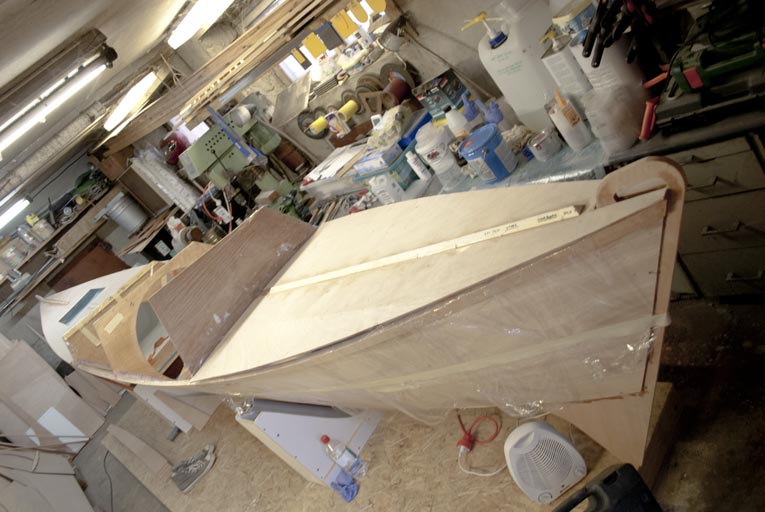
So whats the balance for now… With a bit more than half a year I have managed to assemble starboard hull up to the decks. Later ones have been prepared for gluing.
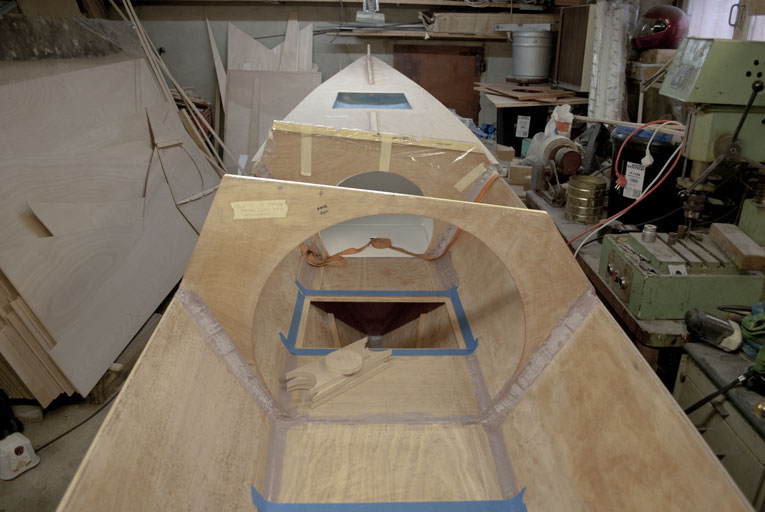
Next item in the plan is to paint undersides of the bunks before starting with cabin sides. All nicely prepared, waiting for the right vibes…
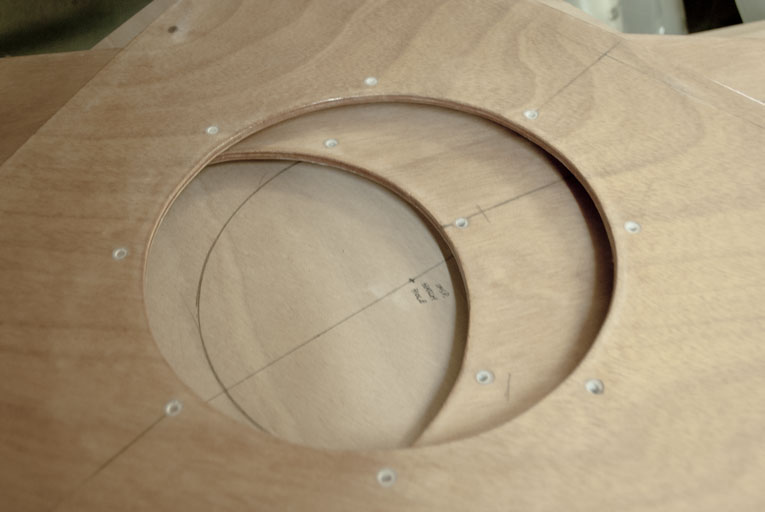
Broadsides & bulkheads of the port hull were cut out already in summer. So for a change of scenery I started with gluing deck-beams and bunk bearers, also I prepared nice thickened-epoxy holes for taking inspection hatch bolts. Maybe its overkill… on starboard bulkheads I used just screws.
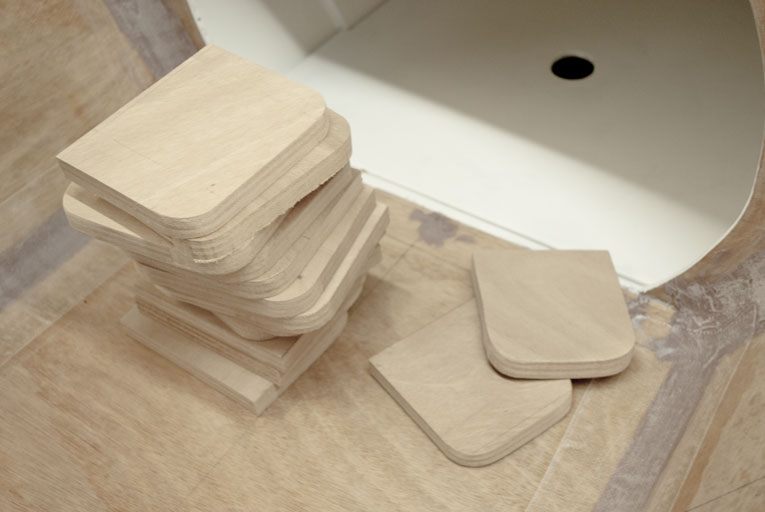
Last week I spend some therapeutic hours and cut out small pieces from the 15mm ply, namely lashing pads and butt blocks for beams…
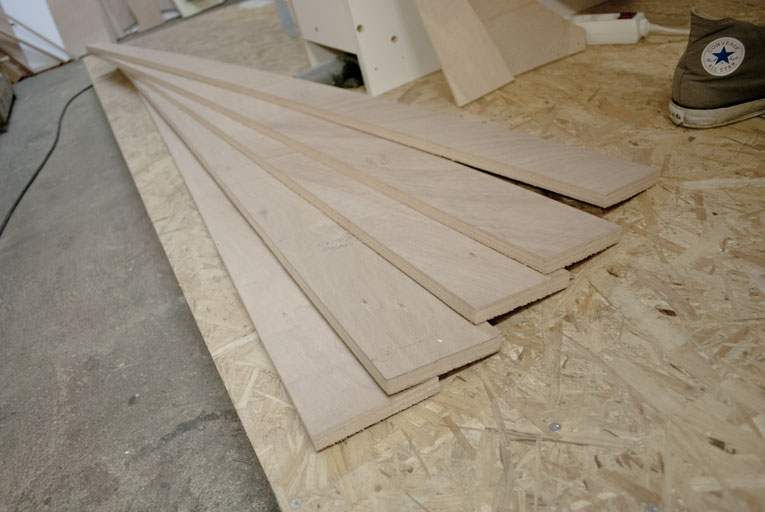
… then continued with beam web pairs, which also ended previous sanative session with a cruel fact that I miss few inches of ply sheet in order to complete all three pairs. Apparently when I produced rudders, stem & stern posts in spring, I went for too excessive safety margins…
Bugger!

Meanwhile I have prepared decks for gluing, this means attaching the stingers, epoxy coating and painting undersides. Loathed paintjob… This Tikkurila Temadur is indeed a quite nasty stuff working in under-ventilated garage I have there, but since it sticks into epoxy pretty well I guess I have to be pleased with it, no intention to get lost in the poly-carbonates maze again…This time I made my life a bit easier and bought proper thinner as well, which means I do not have to worry about short pot life anymore and also I can avoid slight coagulating problems I had previously when I was working too slow.
Anyway what I have recognized is that I have hit the 400 hour benchmark already, since I have worked at least 16 hours per week during summer months and at least 8 hours per week during spring & autumn. By no means I would like to contest Wharram estimates, Im pretty convinced that one could relay Tiki 21 within 400 hour time frame whether he is highly skilled or just a novice bloke who is desperately in rush to get onto the water soon as possible.
In my case… well I haven’t been a prompt starter all of my life. I need to develop a kind of feel of the process, tools and materials, only when I’m certain that those fresh spread wings will carry I would dear to dive head fist into the matter. Otherwise there is high probability that I will mess something up completely.
I had to castrate my inner perfectionist pretty much in the start anyway.
But furthermore I’m still struggling to fully disclose this little universe boiling there down in the garage. I guess its rarely not just a boat building for numerous amateur comrades out there. Building a 21 foot catamaran isn’t just a pastime endeavor for most us novices, Im pretty sure.
It just means just too many countless hours of researching, watching YouTube wow-to videos, fearing, hoping, being paranoid over the measurements, recollecting, digging out rare materials, spending money to gadgets you cannot do without, buckling down eternity on your knees with jigsaw, spending agonizing hours in folded position like a maniac flamingo, trying to spread fillets, then sanding fillets, after which reshaping fillets again because you messed up little bit in first time, and then again you are sanding those fillets and then back again behind your computer trying to make sense of all those controversial advice, opinions, dogmas, principles and tricks served in forums, DIY videos and blogs. Your knees hurt, your legs let you down, those dozens of tiny muscles you haven’t been aware of so far, those hurt as well, your nostrils are clogged, as well your brain, it has gone off due a short circuit, that’s because constantly you had to use both hemispheres simultaneously.
So whats the point of all? Its not easy to find a straightforward answer to this, I guess its just constellation of many small, often invisible things, thin threads spinning into taut line which may make up your safety rope in the end. All you have to to is just grab it and see where it pulls, or from where it pulls you out…
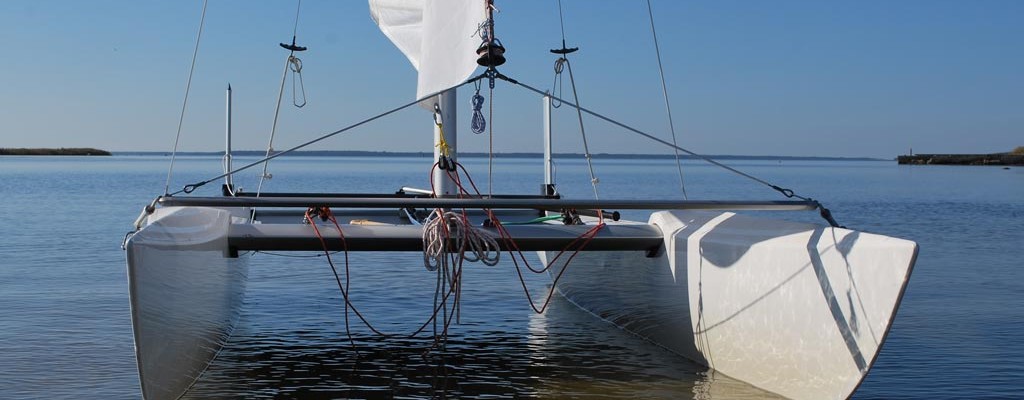
Universe rarely allows you to enjoy multiple pleasures simultaneously, thus the same with my cats. I had to exchange my ‘Dostojevskilik Doris’ to money in order to finance my Tiki 21 building.
So as summer finally sneaked in, I felt little sting in my heart… she rides so smooth, peek by yourself:
Topcat ‘Dostojevskilik Doris’ skimming over Haapsalu bay from AGUR VISUALS on Vimeo.
Doris is Topcat K3 and I could say without much of exaggeration that She has been finest daggerboardless beach cat I have ever owned or sailed. The simplicity of assembly, the ingenious kick-up rudder system which allows you to rise rudders vertically without subsequent weather helm. Which does not only make blasting over shallow water more safe, but is especially handy for solo sailing in strong and gusty wind. One can rose the leeward rudder blade in some amount (sometimes I rose a little bit of windward rudder as well). This calms the boat down little bit, so it does not heel so suddenly. And there will be not much of significant leeway as the boat goes fast in strong winds and therefore giving you enough inertia to play with when you are beating against the wind.
Ah yes, I have to mention those narrow profile hulls, that perform really well in beating against the wind on choppy seas. Based on my experience I could say that Topcat points much higher than other daggerboardless catamarans. Whether they would be Hobie 14, Hobie 16, Hobie 15, Hobie Wave, Nacra 570 or Dart 16 — beachcats that I have sailed.